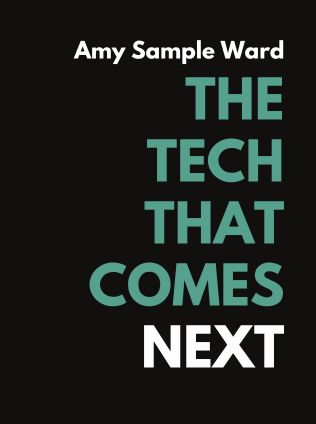
The Tech That Comes Next
How Changemakers, Philanthropists, and Technologists Can Build an Equitable World
By Amy Sample Ward,
Published 03/2022
About the Author
Amy Sample Ward and Afua Bruce, the authors of The Tech that Comes Next: How Changemakers, Philanthropists, and Technologists Can Build an Equitable World, are renowned for their work in technology and social impact. Amy Sample Ward is a leader in nonprofit technology, known for her role as CEO of NTEN (Nonprofit Technology Network). Her work focuses on helping nonprofits use technology to meet their missions effectively. Afua Bruce is a social impact and technology expert who has worked in both the private and public sectors, including at the White House as the Executive Director of the National Science and Technology Council and with organizations like DataKind.
Main Idea
The Tech that Comes Next explores how technology can be leveraged to create a more equitable world. The authors argue that technology is often developed and deployed in ways that reinforce existing inequities and systemic injustices. To counter this, they propose a collaborative approach involving social impact organizations, technologists, funders, policymakers, and communities to rethink and reshape the role of technology in society. The book emphasizes the need for community accountability, equitable funding, inclusive policy-making, and a cultural shift within the technology sector to ensure that technology serves all people, especially those historically marginalized.
Table of Contents
- Introduction
- Technology to Support Social Change
- Technology That is Accountable to Community
- Changing Technology Culture
- Developing Technology for Social Impact Organizations
- Changing Technology and Social Impact Funding
- Changing Laws and Policies
- Changing Conditions for Communities
- Conclusion
Technology to Support Social Change
Technology is integral to modern life, shaping how we communicate, work, and solve problems. However, technology's development and implementation often exacerbate existing social inequalities. To harness technology for social change, it's crucial to acknowledge its broad definition, encompassing digital systems and everyday devices.
As the authors state, "Technology is put into use by humans, and accordingly, is good or bad depending on the use case and context" (Sample Ward and Bruce). This highlights that technology's impact depends on how it is designed and deployed, reflecting the biases of its creators.
- Technology must be designed inclusively, considering diverse user needs.
- Social impact organizations should focus on mission-driven tech use, ensuring tools align with their goals.
- Communities must be engaged in technology development to ensure it addresses real needs.
Understanding that technology has the power to either perpetuate or dismantle systemic inequities is crucial. The authors advocate for a conscious effort to use technology to address social issues by involving all stakeholders, especially those most affected by the technology. This approach requires redefining success in technological development, focusing not just on innovation but on equitable outcomes. The book provides numerous examples of how technology, when designed with a social mission, can significantly impact communities. For instance, leveraging data analytics to improve healthcare access in underserved areas or using mobile technology to enhance education for children in remote regions.
"We live in the age of technology. Whether you consider how food travels from farm to table, how clothes are manufactured, or even how we communicate, tech has changed and continues to change how these processes happen." - Amy Sample Ward
Technology That is Accountable to Community
For technology to truly serve communities, it must be accountable to them. This involves involving community members in all stages of technology development, from goal setting to implementation. The authors emphasize the importance of community-centered design, where the needs and perspectives of the most affected populations guide technology use.
"Equitable technology includes the networks, hardware, software, and services that support everyone’s access to, participation in, and fulfillment in an equitable world" (Sample Ward and Bruce). This means creating technology that is not only accessible but also empowering.
Sign up for FREE and get access to 1,400+ books summaries.
You May Also Like
Rich Dad Poor Dad
What the Rich Teach Their Kids About Money - That the Poor and Middle Class Do Not!
By Robert T. KiyosakiFreakonomics
A Rogue Economist Explores the Hidden Side of Everything
By Steven D. Levitt and Stephen J. DubnerFactfulness
Ten Reasons We're Wrong About the World – and Why Things Are Better Than You Think
By Hans Rosling



















